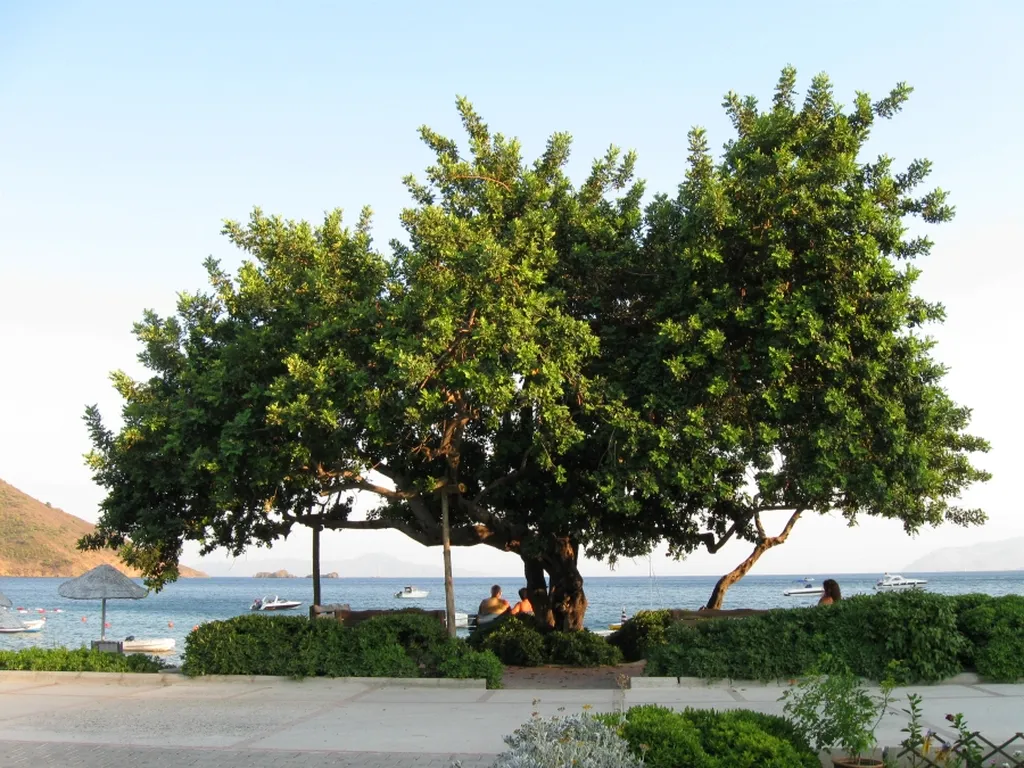In the heart of the Mediterranean, a humble tree holds secrets that could revolutionize the agriculture and pharmaceutical industries. The carob tree, long valued for its sweet pods, is now revealing the untapped potential of its leaves. A recent study published in *Scientific Reports* has shed light on the remarkable phytochemical properties of wild carob (Ceratonia siliqua L.) leaves, opening doors to new possibilities for agricultural by-products.
The research, led by Salah Laaraj from the Regional Center of Agricultural Research of Tadla at the National Institute of Agricultural Research (INRA), delves into the phytochemical content and biological activities of wild carob leaves. The study quantified the total polyphenol, flavonoid, and condensed tannin contents of the ethanolic extract of carob leaves (CLEE), revealing impressive results. “The leaves are a treasure trove of bioactive compounds,” Laaraj noted, highlighting the potential of these often-overlooked agricultural by-products.
The findings are promising for the agriculture sector, where the valorization of by-products is increasingly important. Carob leaves, typically discarded, could become a valuable resource. The study identified cinnamic, ferulic, sinapic, rutin, and succinic acids as dominant phenolic compounds in CLEE. These compounds contribute to the extract’s strong antioxidant activity, with IC₅₀ values of 0.293 ± 0.034 mg/mL for DPPH and 19.48 ± 2.47 mg/mL for ABTS assays. The total antioxidant capacity was measured at 189.01 ± 7.18 µg ascorbic acid equivalent/mg.
Beyond antioxidant properties, CLEE demonstrated notable antibacterial effects against a range of bacterial strains. This could pave the way for natural, plant-based antimicrobial agents in the agriculture and food industries. “The antibacterial properties of carob leaves could be particularly useful in organic farming and food preservation,” Laaraj suggested, hinting at the potential applications of these findings.
The study also revealed that CLEE exerts a selective antiproliferative effect against the MCF-7 breast cancer cell line, with an IC₅₀ value of 28.26 ± 3.15 µg/mL. This opens up exciting possibilities for the development of natural anticancer agents. Molecular docking highlighted rutin as a key compound contributing to the antioxidant activity, while in silico absorption, distribution, metabolism, and excretion profiling showed that most detected bioactive compounds possess good oral bioavailability and comply with Lipinski’s rule of five.
The commercial impacts of this research are substantial. For the agriculture sector, the valorization of carob leaves could create new revenue streams and reduce waste. For the pharmaceutical industry, the potential development of natural antioxidants, antimicrobial, and anticancer agents from carob leaves presents a promising avenue for innovation. As Laaraj put it, “This research not only highlights the pharmacological potential of carob leaves but also underscores the importance of exploring the biological activities of agricultural by-products.”
The study’s findings could shape future developments in the field, encouraging further research into the pharmacological value of other underutilized plant parts. As the world seeks sustainable and natural solutions, the humble carob leaf stands as a testament to the untapped potential within our agricultural landscapes. The research, published in *Scientific Reports* and led by Salah Laaraj from the Regional Center of Agricultural Research of Tadla at the National Institute of Agricultural Research (INRA), marks a significant step forward in the quest for natural, effective, and sustainable solutions in agriculture and healthcare.

